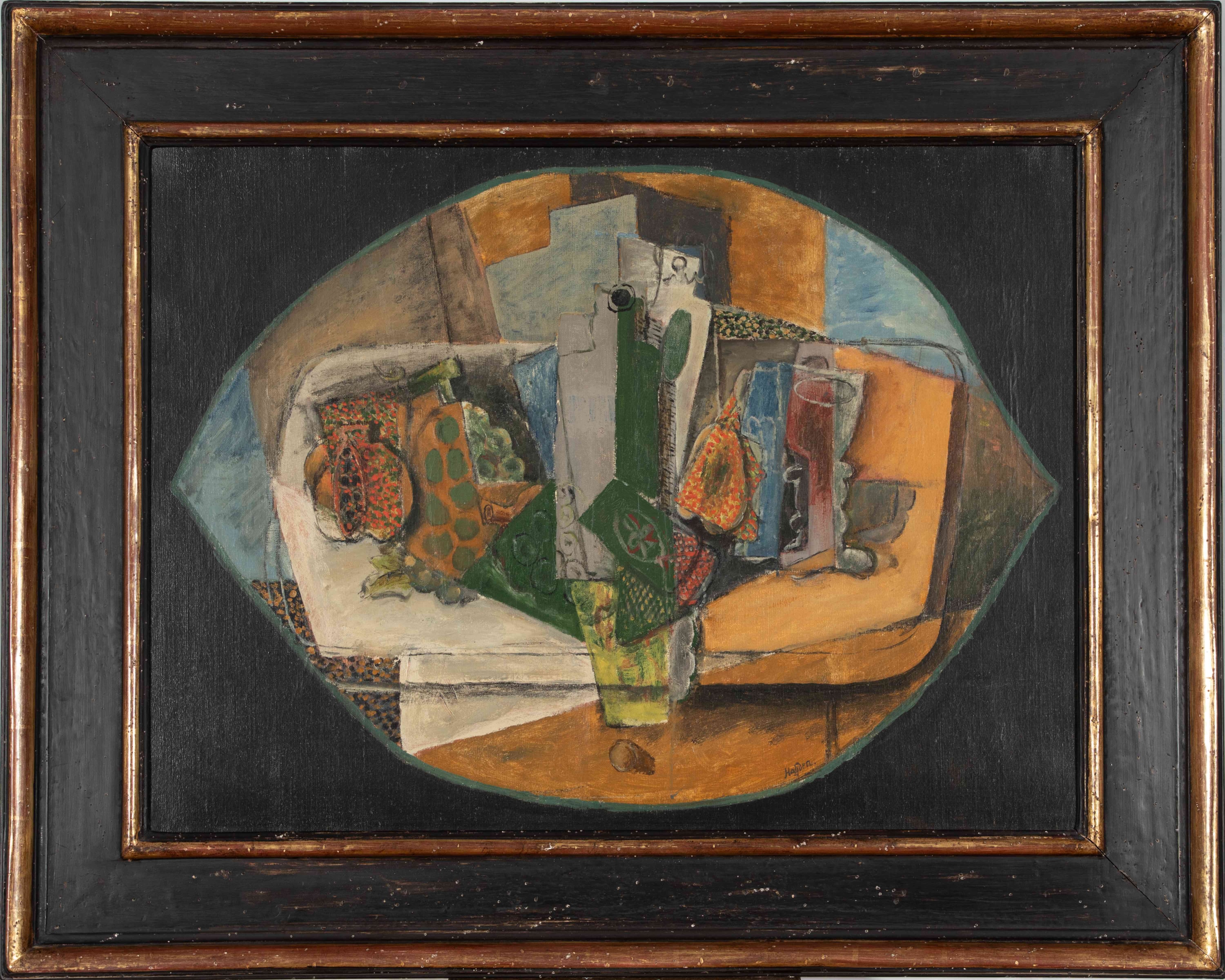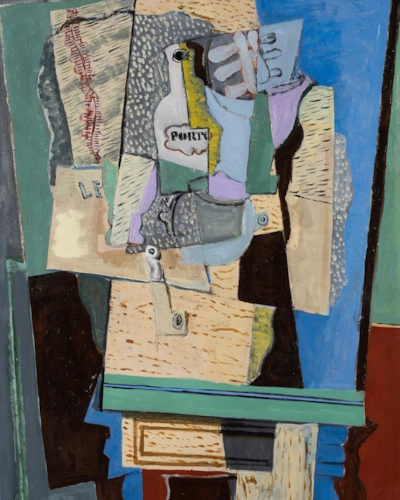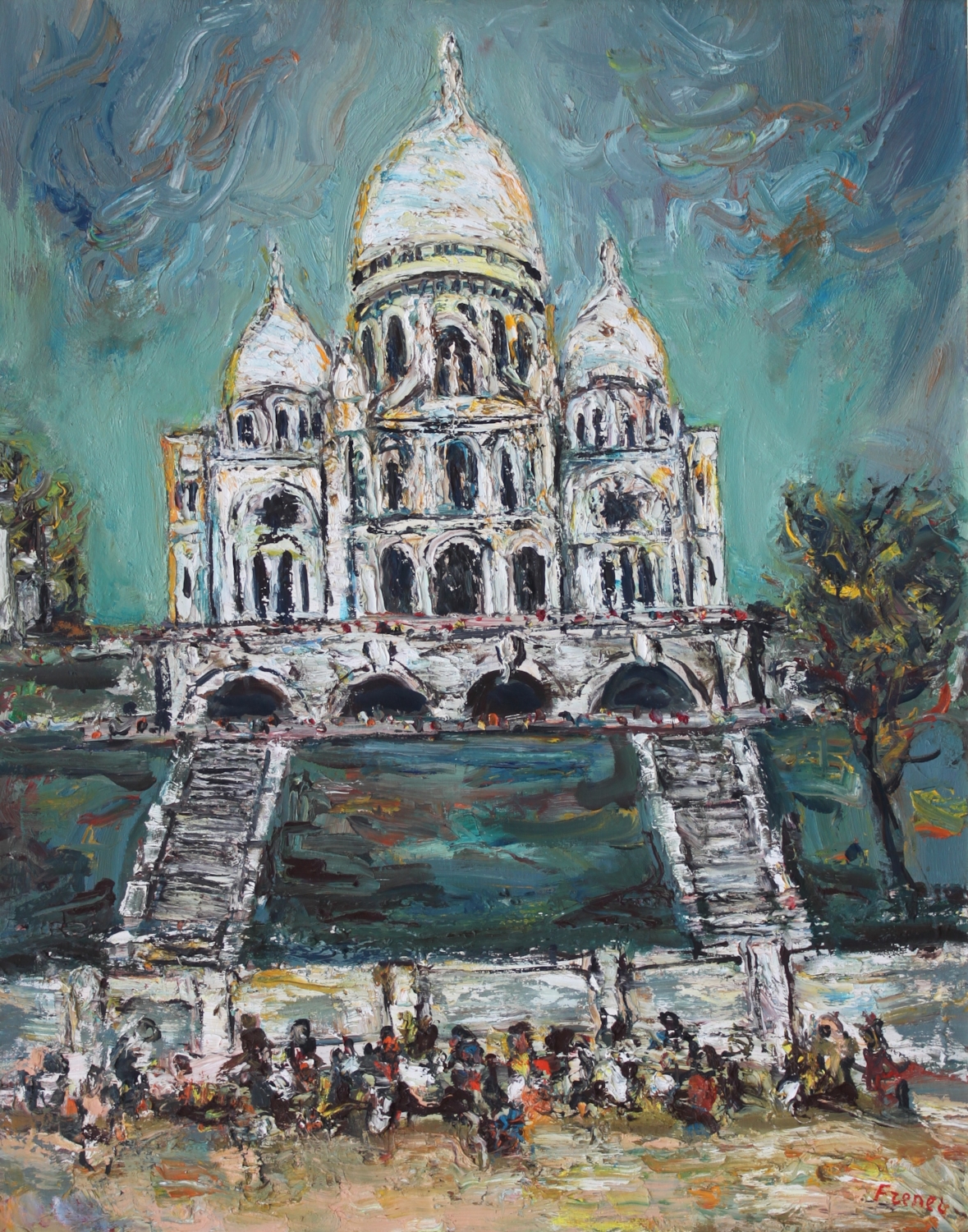Henri Hayden
1883 - 1970
Nature morte au citron
60 x 80.5 cm (23 ⁵/₈ x 31 ³/₄ inches)
Signed lower right, Hayden
Signed and dated on the reverse, H. Hayden / III-1920

Sotheby's New York, May 1998
Private collection, Israel
This original artwork by Henri Hayden is available for immediate purchase.
Henri Hayden
biography
Born in Warsaw, Hayden was one of the many Eastern European artists who gravitated towards Paris. Moving there in 1907, he briefly studied at the art school La Palette, and went on to paint in Brittany most summers from 1909 to 1919.
Hayden’s first one-man show was at the Galerie Druet in Paris, 1911. During this time Cézanne became a strong influence, as reflected in The Chess Players at La Rotonde - a significant work by Hayden shown at the Salon des Indépendants in 1914. From 1915 to 1921, Hayden participated in the Cubist movement, and this continued to impact his style until 1922. His friend Juan Gris led him to the dealer Léonce Rosenberg, and through him he became acquainted with Jean Metzinger, Gino Severini, Pablo Picasso, and Henri Matisse. While his most famous painting The Three Musicians - now in the National Museum of Modern Art, Paris - is indebted to Cubism, Hayden eventually reacted against the avant-garde movement, returning to the direct study of nature.
From 1922, Hayden’s oeuvre became more figurative, proving immensely successful with dealers and the public. Hayden’s work gained increasing recognition from around 1952, when it showed signs of returning towards Cubism, with the landscapes and still-life’s both becoming both more simplified and composed compared to his previous Cubist works. Never fussy or laboured, they combine a new richness of colour with lyrical melancholy. At the end of his life, Hayden bought a country house near La Ferté-sous-Jouarre, where he painted many landscapes of the surrounding area; this time was marked by meditation and a purity of vision. Hayden died in Paris in 1970.
Henri Hayden
biography
you may also like
1883 - 1970
Coquillage et réveil en rouge
33.5 x 46 cm (13 ¹/₄ x 18 ¹/₈ inches)
1887 - 1985
Fête au Village
56.7 x 76.8 cm (22.32 x 30.24 inches)
1885 - 1930
Rebecca Couchée
73.1 x 91.8 cm (28 ³/₄ x 36 ¹/₈ inches)
1888 - 1964
Parade Mexicaine
45.1 x 55.6 cm (17 ³/₄ x 21 ⁷/₈ inches)
1887 - 1985
Peintre au Chevalet au Bouc Jaune
76.1 x 56.4 cm (30 x 22 ¹/₄ inches)




















